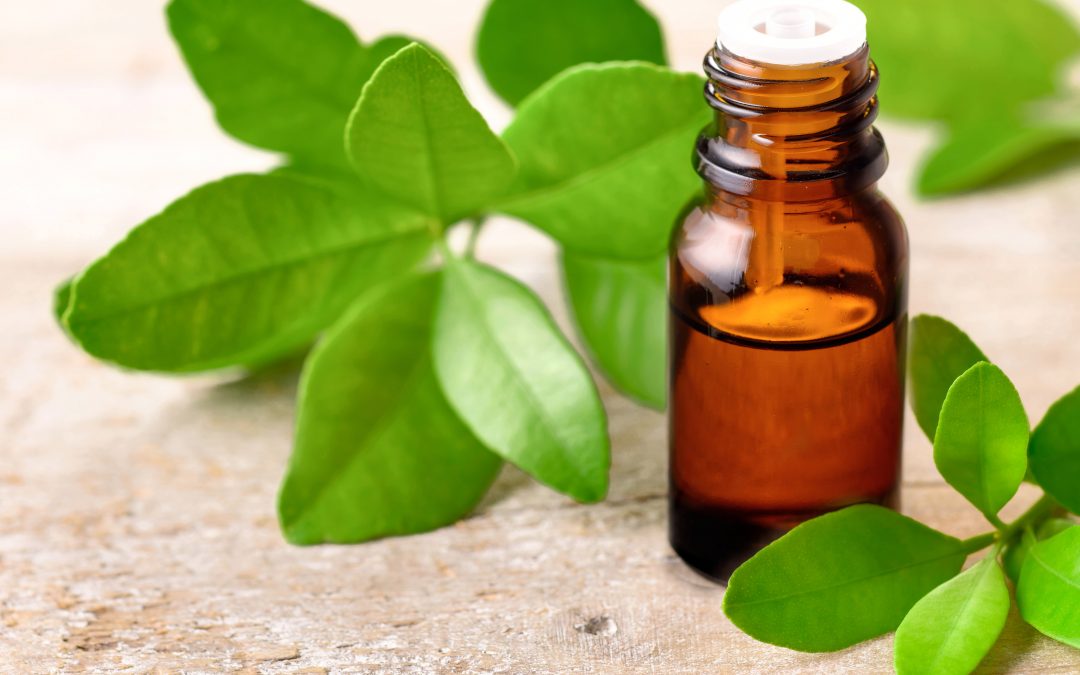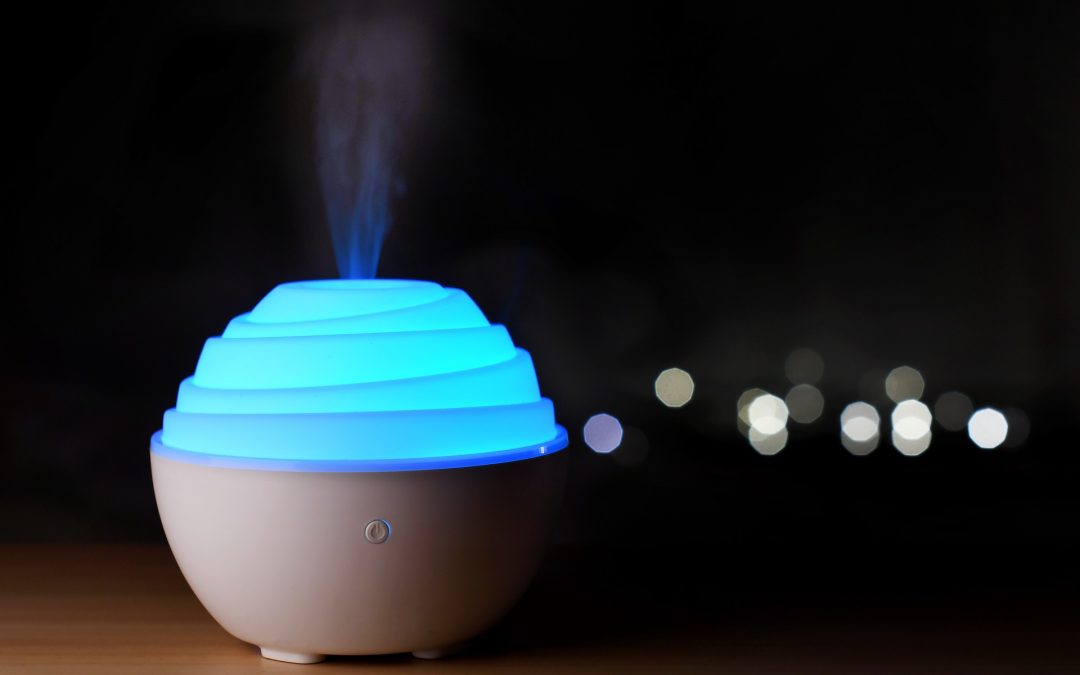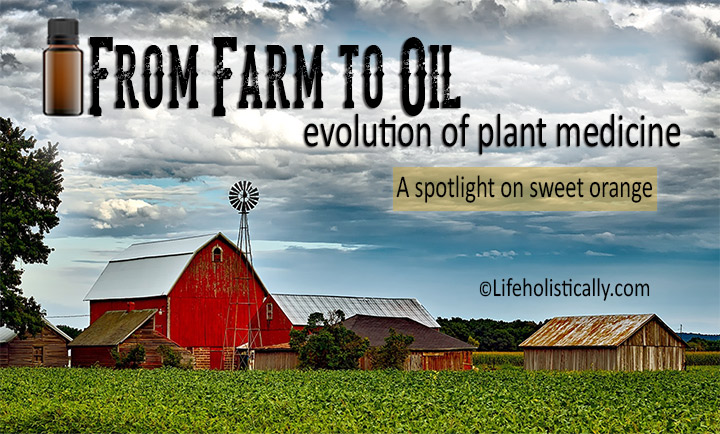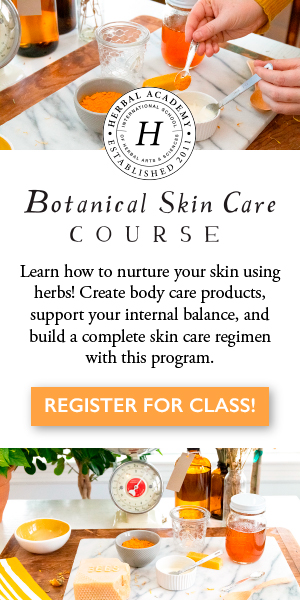
by Leslie Moldenauer | | Essential Oils
Do you start off winter ready to go dormant like the earth, full of promise of contemplation, transformation, and rebirth, only to find Seasonal Affective Disorder (SAD) rears its ugly head mid-February and you are longing for a warm, sunny day? Complementary Therapies for SAD During the Darkness of Winter
I too, struggle with SAD, which slowly begins to creep in mid to late February, so I try my best to get a jump on it before it takes over completely.
What exactly is SAD, what causes it, and what can we do about it, if anything? SAD, or winter funk, is more common than you might think, affecting more than 10,000,000 cases each and every year (1). This affliction is quite similar to depression but is expected like clockwork, in the deep depths of the winter months. The cause is the lack of sunlight, and the symptoms include but are not limited to:
- Decreased physical activity
- Difficulty concentrating
- Feelings of hopelessness and sadness
- Fatigue/Low energy
- Increased appetite or cravings for sweet or starchy foods
- Irritability
- Not feeling rested in the morning
- Possible thoughts of suicide
- Weight gain
How does this look in real life? For me, as the repeat grey cloudy days begin to roll in, I know my symptoms are on their way. Next, I begin to notice that many things bother me that normally wouldn’t, or everything gets assigned a catastrophic level of stress, demanding my attention. Lastly, my typical self-care routine begins to falter and staying on top of it increasingly difficult.
If you have these symptoms that tend to pop up the same time of year, you may be dealing with a case of SAD. Sometimes the symptoms are minor, other times they are more serious. If this is the case for you, please seek the advice of your Healthcare Provider.
What can be done?
Trust Vitamin D
I have learned over the years, that the earlier I begin to take my trusty vitamin d, the longer it will take for my symptoms to increase. Why vitamin d? The sun is our friend. Research suggests that up to 85% of people could be deficient in vitamin D without knowing it… leaving them with less-than-optimal health. Vitamin D is responsible for the regulation of over 2,000 genes in your body! But does low vitamin D levels correlate with increased SAD symptoms? The results are a bit mixed, but I believe it is a correlation worth considering based on the following studies:
Vitamin D deficiency, depression linked in UGA-led international study. (2017, December 12).
and
Brown, J. (2018, October 10). Should everyone be taking vitamin D?
Before taking massive doses of vitamin d, I recommend getting your levels tested. Otherwise, you can safely take the upper levels of intake found here on Web, MD.
Let the Light Shine In
The next thing I do is find a semi-permanent spot for my light box until spring arrives. Light therapy has been shown to greatly reduce the symptoms of SAD, by nearly all that use it (Light therapy can be used for all types of depression and insomnia) (2).
The theory behind light therapy is that it helps to produce the serotonin that the warm sunshine provides us, which is our feel-good hormone. Deprivation of serotonin has widespread effects on our mood and behavior and sitting in front of a light box can really be of great benefit.
It is important to use a full-spectrum light like those linked below (affiliate links)
VeriLuxe Happylight
Microlight Therapy Lamp
Light Happy Lamp
Look to the Beautiful Yellow Flower
If your SAD is mild to moderate, an herbal remedy that could be very effective for you is St. John’s Wort. If you look at studies of 20 years ago, the evidence was questionable, but a most recent meta-analysis published in 2017 showed that St. John’s Wort is comparable to SSRI’s in cases of mild to moderate depression (3). How does it work? The major components in the plant include hypericin, pseudohypericin, and hyperforin, which work synergistically to increase the activity of brain chemicals such as serotonin and noradrenaline improving overall mood.
St. John’s Wort can be purchased in a capsule or tea form, but my recommendation is in a tincture. I recommend this tincture from Above and Below Apothecary.
*St. John’s Wort can possibly interact with oral contraceptives, anti-seizure medications, and anticoagulants, please do your research.
Highlighted Essential Oils
There are a number of essential oils that can assist during the gloomy grey days of winter. If you have something that works quite well for you stick with it, but if you need a few ideas, these are my top 3 recommendations.
Cardamom
Cardamom is incredibly soothing and nurturing during times of sadness and depression. This oil is also beneficial for the worrier type personality to find stillness from the seemingly endless mind chatter (4). Cardamom blends beautifully with a number of essential oils for our mental wellness including Lemon, Orange, and Rose.
Lemon
Lemon essential oil has been shown to be effective for seasonal affective disorder (SAD) as well (5). An exciting study published in 2016 showed that bright light therapy combined with aromatherapy inhalation was more beneficial than either one alone for treatment for depression, anxiety, and stress (6). Lemon essential oil blends quite well with Bergamot and Lavender, both of which are beneficial for our emotional state.
Bergamot
My third recommendation for SAD and other cases of mild to moderate depression is Bergamot essential oil. With a warm citrusy and fruity aroma, Bergamot has been studied extensively for its ability to uplift our outlook on those dreary days and is very beneficial for emotional and mental fatigue (7). Bergamot essential oil blends well with clary sage, jasmine, orange, and sandalwood, all beneficial for emotional healing.
This blend is from my most recent book, Emotional Healing with Essential Oils, called Silver Lining Diffuser Blend, formulated specifically for SAD.
4 drops lemon
3 drops mandarin red
2 drops bergamot
1 drop jasmine
Place the appropriate drops essential oils into your favorite diffuser, based on manufacturer instructions. Follow safe diffusing guidelines.
For 99 other applications and remedies for your emotional health, grab your copy today!
I hope that a few of these suggestions resonate with you, sending you all abundant health & happiness…and a lot of sunshine.
Please note that I am not a medical practitioner. The content of this website is provided for general informational purposes only and is not intended as, nor should it be considered a substitute for, professional medical advice. Do not use the information on this website for diagnosing or treating any medical or health condition. If you have or suspect you have a medical problem, promptly contact your professional healthcare provider. By using this website, you assume full responsibility and liability for your own actions.
References
(1) Seasonal Affective Disorder. (n.d.). Retrieved from https://www.psychologytoday.com/us/conditions/seasonal-affective-disorder
(2) Light therapy. (2017, February 8). Retrieved from https://www.mayoclinic.org/tests-procedures/light-therapy/about/pac-20384604
(3) Ng, Q. X., Venkatanarayanan, N., & Ho, C. Y. X. (2017). Clinical use of Hypericum perforatum (St Johns wort) in depression: A meta-analysis. Journal of Affective Disorders, 210, 211–221. doi: 10.1016/j.jad.2016.12.048
(4) Shutes, J., & McLaughlin, S. (2018, August 21). Cardamom: Queen of Spices. Retrieved from https://aromaticstudies.com/cardamom-queen-of-spices/
(5) Komiya, M., Takeuchi, T., & Harada, E. (2006). Lemon oil vapor causes an anti-stress effect via modulating the 5-HT and DA activities in mice. Behavioural Brain Research, 172(2), 240–249. doi: 10.1016/j.bbr.2006.05.006
(6) Dong, S., & Jacob, T. J. (2016). Combined non-adaptive light and smell stimuli lowered blood pressure, reduced heart rate and reduced negative affect. Physiology & Behavior, 156, 94–105. doi: 10.1016/j.physbeh.2016.01.013
(7) Watanabe, E., Kuchta, K., Kimura, M., Rauwald, H. W., Kamei, T., & Imanishi, J. (2015). Effects of Bergamot (Citrus bergamia(Risso) Wright & Arn.) Essential Oil Aromatherapy on Mood States, Parasympathetic Nervous System Activity, and Salivary Cortisol Levels in 41 Healthy Females. Complementary Medicine Research, 22(1), 43–49. doi: 10.1159/000380989
My Top 5 Essential Oil Diffuser Recommendations

by Leslie Moldenauer | | Essential Oils, Uncategorized
Petitgrain
Botanical Name: Citrus aurantium var amara or bigardia
Aroma: Sweet and light floral aroma (Not as in your face as Neroli essential oil)
Plant Parts Used: Leaves and twigs
Method of Extraction: Steam distillation
Precautions: There are no known safety considerations for this essential oil.
Blends Well with Top 5 for Emotional Wellness: Bergamot, Lavender, Roman Chamomile, Sweet orange, and Ylang Ylang.
Aroma Mantra: With every breath, I am calming my mind
Historical Use
Historical use of the plant points us to cultures in South American and China using the leaves of the bitter orange to treat cold and flu and help with digestive complaints such as indigestion and nausea (1).
Petitgrain essential oil is used extensively in perfumery, but there are quite a few benefits to the oil, I will cover those for emotional wellness here.
What Do the Studies Tell Us?
In a study published in 2017 in the Journal of Alternative and Complementary Medicine, Petitgrain essential oil improved the mental and emotional conditions of the participants (2). Petitgrain essential oil was inhaled through diffusers while participants worked on their computers. The oil improved performance and reduced stress levels. This action was due to the constituents’ linalyl acetate, linalool, and myrcene.
Emotional Wellness
Reach for Petitgrain essential oil for a multitude of stress-related concerns and has a great ability to sooth and quiet the mind. Do you struggle with worry, overanalyzing or anxiety? When you lay down at the end of the night to sleep does your mind take you away to all of the worries in your life? If so, you owe it to yourself to try this sweet little oil. Petitgrain is the first oil I reach for when my oldest is having issues falling asleep because he cannot stop his thoughts or get a song out of his head and is feeling frustrated.
Petitgrain has an affinity for the central nervous system, therefore, when it is inhaled your pulse slows, breathing settles, and the body reverts to the parasympathetic nervous system, rest and restore mode. Place it in your diffuser before you lay down at night. Put some in an aromatherapy inhaler when you need to focus. Petitgrain essential oil is definitely your ally here.
What Other Professionals Say
According to long-standing aromatherapist Patricia Davis, “Where Neroli evokes the highest psychic or spiritual levels of mind, Petitgrain relates more to the conscious, intellectual mind. Inhale this oil when you need mental clarity (3).”
Kurt Schnaubelt states that “Petitgrain essential oil is non-toxic and can be used liberally in preparations used to address stress and imbalance of the autonomic nervous system (4).”
Julia Lawless recommends blending with Petitgrain bigarade for the psyche for stress, tension, anxiety, and low mood (5).
Now Try This
Ready to try this oil in practice? The following blend is from my book, Aromatherapy for Kids book, but is effective for all ages (6).
Antsy Pantsy (Master Blend)
Mandarin Red 15 drops
Lavender 10 drops
Petitgrain 5 drops
Cedarwood 5 drops
You can utilize this master blend properly diluted in an inhaler, diffuser, or in an aroma bath. Store unused portions in a cool spot.
Please note that I am not a medical practitioner. The content of this website is provided for general informational purposes only and is not intended as, nor should it be considered a substitute for, professional medical advice. Do not use the information on this website for diagnosing or treating any medical or health condition. If you have or suspect you have a medical problem, promptly contact your professional healthcare provider. By using this website, you assume full responsibility and liability for your own actions.
References
(1) Decleor, Paris. Petitgrain Essential Oil. Retrieved from https://www.decleor.co.uk/blogs/petitgrain.html
(2) Huang, L., & Capdevila, L. (2017). Aromatherapy Improves Work Performance Through Balancing the Autonomic Nervous System. The Journal of Alternative and Complementary Medicine, 23(3), 214–221. doi: 10.1089/acm.2016.0061
(3) Davis, Patricia. (1996) Subtle Aromatherapy. Saffron Walden: C.W. Daniel
(4) Schnaubelt, K. (2011). The healing intelligence of essential oils: the science of advanced aromatherapy. Rochester, VT: Healing Arts Press.
(5) Rhind, J. (2016). Aromatherapeutic blending: essential oils in synergy. London: Singing Dragon.
(6) Moldenauer, L. (2017). Aromatherapy for Kids: Safe and Sound. CreateSpace Independent Publishing Platform
Want to learn more about essential oils for our Emotional Wellness? Grab my latest bestselling book here-Emotional Healing with Essential Oils: Relieve Anxiety, Stress, Depression, and Mood Imbalances Naturally

by Leslie Moldenauer | | Essential Oils
I love essential oils. Is that surprising? Surely if you know me, you know that may be an understatement. Know what else I love? Essential oil diffusers. I have a few criteria that I follow before I purchase one, the first is its safety features, the second is it needs to be attractive in some way. I get this question often, so I thought it was time to put it into a blog. Drum roll please…..here are my top 5 essential oil diffuser recommendations.
#1. ASAKUKI Essential Oil diffuser. I have never quite filled it to the rim as the reservoir is a large 700ml, but I love the clean color of this sleek white and grey diffuser. The cube shape makes it really easy to clean, it filters through 7 LED colors (I LOVE my mood lighting), and there are timer settings; a must for me. I use the one-hour setting button so that I can set it and forget it. A bonus is that it is whisper quiet.
Affiliate Link: https://amzn.to/31oxs8A
#2 Stadler Form Jasmine Essential Oil, in black. I love black, and it fits in my bathroom perfectly. It comes in other colors too. Love red? Steel grey? Or classic white? The timer is a bit different on this one than the first, it operates at intervals of 10 minutes on and 20 minutes off, which is perfect in a bathroom when taking a bath or shower. It does not get overwhelming because it shuts off after 10 minutes. Perfect!
Affiliate Link: https://amzn.to/2RVlal3
#3 Everlasting Comfort Diffuser. If safety is really important to you, perhaps this BPA free diffuser will be of interest to you. It is attractive, comes with a 7 LED light pattern with a dimming option, which is really nice if you like to sleep with a very dark room. There are four timer settings, but the one I reach for is 1 hour so I can feel safe knowing it will shut off shortly after I fall asleep.
Affiliate Link: https://amzn.to/2SmjGiI
#4 SZTROKIA 3D Galaxy Aromatherapy Diffuser. This is definitely a diffuser purchased for the ooh’s and aah’s, over anything else. It is simply gorgeous. I have been known to run the lamp without the mister, which is a perfect function for me! The listing states it has 7 LED 3D color changing patterns, but there are colors in between the 7, making that number higher. There is no timer on this one, something to make note of, but there are 3 options for the strength of the mist. The other diffusers are made of plastic, this one is glass.
Affiliate Link: https://amzn.to/2ttnzdk
#5 SOCKETECH Smart WiFi Essential Oil Aromatherapy Diffuser. This last choice is for those aromatherapy lovers who are also tech lovers. This beauty is Alexa & Google home compatible allowing you to utilize all Alexa and Google Home devices to command the diffuser to turn ON/OFF or change the light color by voice. There are 7 LED dimmable light patterns and three timers setting, with my requirement of a one-hour setting.
Affiliate Link: https://amzn.to/2SkmRrc
So, you may be asking yourself, “Is the timer really that important”, or “Why a timer”? I want to make sure I cover some safety aspects here.
Our sense of smell goes through five stages, those are: detect, transmit, perceive, analyze, and store. These stages cycle remarkable quickly. Up inside our nose, inside each nostril is the beginning of our olfactory system called the olfactory epithelium. The olfactory epithelium is the size of a small postage stamp in each nostril, and has 40 million sensory neurons, capable of detecting .0000000013 of an ounce of an aroma in a single breath of air (1). We can identify a smell instantly, but it can fade just as quickly, what do I mean?
Have you ever walked into a room and smelled something very specific? It could have been pleasing or not, but if you stuck around in the room for a decent length of time, did you ever experience that scent essentially disappearing? Well it didn’t disappear; this is actually a phenomenon called habituation (make or become used to or accustomed to something). In aromatherapy this is often termed temporary sensory fatigue or olfactory adaption.
Robert Tisserand stated in his book, Essential Oil Safety, “prolonged inhalation (more than about 30 minutes) of concentrated essential oil vapors (e.g., steam inhalation or direct from a bottle) can lead to headaches, vertigo, nausea and lethargy” (2). He recommends diffusing for 30-60 minutes before taking a break, I like to be more conservative when little kids are in the home of 15 minutes of diffusing at a time.
We can begin to paint the picture here, diffusing essential oils for too long not only leaves the possibility of overload via the symptoms mentioned above, but olfactory adaption can play tricks on our senses if we cannot even smell the aroma any longer in the room. Couple this with our loved ones, sometimes too little to express that they are feeling unwell, and it can easily be seen that diffusing for hours on end is not the best choice.
For your safety and for conserving essential oils, grab one of these diffusers with a timer. Cute and practical!
Enjoy!
Leslie xo
References
(1) Peterson, D. (2012) Aroma 101. American College of Healthcare Sciences
(2) Tisserand, R., Young, R., & Williamson, E. M. (2014). Essential oil safety: a guide for health care professionals. Edinburgh: Churchill Livingstone/Elsevier. (100-104, 658)
3 Common Yet Risky Essential Oil Mistakes
Essential Oil Safety-Cautions and Contraindications

by Leslie Moldenauer | | Essential Oils
The essential oils that we know and love are derived from plants, but this does not necessarily mean that the therapeutic benefits or uses from the plant to essential oil are the same. In many cases, this does not hold true. There are many recipes online utilizing essential oils that do not honor chemistry and do not focus on safe use. Sustainability is also a massive concern as more and more people are stepping into the essential oil community every day. It is not necessary to use oils every day, or in everything. When we see a recipe shared online, we must ask ourselves if it is necessary, shifting the way we currently see these beautiful resources.
My goal in this series of blogs is to celebrate plants in all of their glory. I will walk you through from farm to oil. Uses, limitations, and fun recipes of each botanical will be covered. Within each article, I will discuss the herb, flower, fruit, seed, root, or bark, and finally, the oil. This will be informative and most importantly, FUN!
Today I will be talking about sweet orange citrus sinensis essential oil for its powerful therapeutics in the realm of our emotional wellbeing.
Oranges, juicy, sweet, and so uplifting…. (Citrus sinensis)
The first place our thoughts go to when we talk about oranges may be sunny Florida, but sweet oranges, a member of the rutaceae family are actually native to China. Now, the orange is the most common fruit grown in the world today, in places including the Far East, the Union of South Africa, Australia, throughout the Mediterranean area, and subtropical areas of South America and the Caribbean. When looking at the production of oranges worldwide, the amount of oranges that are grown organically is negligible, therefore we should use caution using this oil internally. The great thing is that there is no real need to.
What should we know about conventionally grown oranges? They are sprayed with a lot of pesticides. Over 140 of them. The good news here, is researchers tell us that the pesticides do not find their way to the fruit that we consume, but we know that the peels are cold-pressed to obtain the essential oil, which a very important factor for those that champion internal usage of essential oils [2]. (I still only buy organic oranges, because I eat them nearly every day) No knowledge is bad knowledge.
The main constituent in an orange that we look to use for our health is limonene. Limonene has many benefits, and there have been many studies involving this constituent that show that it does, in fact, have great promise. Limonene is found in the peel of the citrus fruit. Orange has even more limonene than lemon, around 95% compared to 65%, approximately, and lemon is the most commonly recommended oil to throw back into the delicate mucous membranes of our digestive system, running all the way from our oral cavity to our anus.
Now, before your mind goes down the rabbit hole, as you can easily find misinformation online in regards to orange essential oil, we need to address the method of use from fruit to oil, as that oftentimes is where the message gets lost in translation when it comes to this juicy fresh citrus fruit.
We all want to obtain antioxidants in our diets. Antioxidants devour free radicals. Now, it is important to understand that if we are breathing oxygen, we are creating free radicals, so the reality is important too. So…free radicals…in small quantities, not a huge concern, but in excess they will accelerate aging and can lead to all sorts of negative health problems. And since we are being bombarded from all sides with pollution of some sort, we need our liver performing optimally at all times. Consuming foods rich in antioxidants will go a long way towards your optimal health.
Enter oranges, which are very rich in antioxidants, due to both the limonene content as well as the vitamin C content. Thoroughly washing your organic oranges and placing a slice in your water every day is quite healthy, and a nice alternative from plain water all day long. Use the juice of a ½ an orange in a tall glass of water and you have obtained 25% of your recommended daily allowance (RDA) of vitamin C [3]. This is very similar to lemons. Just remember to take care of the enamel on your teeth. Rinsing with water after your drink is a good precautionary measure.
Using the Fruit
Want a sweet treat without the guilt? This is a perfect treat.
Orange Strawberry Mint Popsicles
Adapted from LiaGriffith
These molds are just perfect, and BPA free
Warm water 1 cup
Cold water 1 cup
Raw honey 1/2 cup
Mint leaves, 5-6 sliced in thin strips
Fresh squeezed orange 1
Strawberries, thinly sliced
Warm one cup of your water on the stove to melt the raw honey. Add to a stainless steel or glass bowl to cool quickly (add a few pieces of mint to the warm water). When cooled, add the rest of the water and orange juice.
Place the strawberry slices and mint evenly in your molds, and pour your liquid mixture in. Freeze.
These are so incredibly delicious, without the unhealthy sugars or food coloring.
I ask that all of you begin to think more about where you can use the nutrient-dense fruit before reaching for the essential oil.
When the essential oil is helpful
We can utilize the essential oil to when under stress or suffering from anxiety. Sweet orange essential oil is my number one recommended essential oil to parents for their children. Try this blend in a diffuser (from my Aromatherapy for Kids book):
Woesbegone (Master Blend)
Mandarin red (Citrus reticulata) 15 drops
Orange sweet (Citrus sinensis) 8 drops
Sandalwood Australian (Santalum spicatum) 6 drops
Frankincense (Boswellia carterii) 4 drops
Vetiver (Vetiveria zizanoides) 2 drops
Place these oils in a 5 or 10ml glass bottle. Now you can use on an aromastick or diffuser per your specific diffuser instructions. You can even apply topically properly diluted as sweet orange essential oil is not phototoxic to the skin.
What Does the Research Say?
- “Two hundred patients between 18-77 years of age (half women, half men) were assigned to one of four independent groups. While waiting for dental procedures patients were either stimulated with ambient odor of orange or ambient odor of lavender. Anxiety, mood, alertness and calmness were assessed while patients waited for dental treatment. Statistical analyses revealed that compared to control condition both ambient odors of orange and lavender reduced anxiety and improved mood in patients waiting for dental treatment” [4].
- “Forty (40) male volunteers were allocated to five different groups for the inhalation of sweet orange essential oil (test aroma: 2.5, 5, or 10 drops), tea tree essential oil (control aroma: 2.5 drops), or water (nonaromatic control: 2.5 drops). Immediately after inhalation, each volunteer was submitted to a model of anxiety, the video-monitored version of the Stroop Color-Word Test (SCWT). Although more studies are needed to find out the clinical relevance of aromatherapy for anxiety disorders, the present results indicate an acute anxiolytic activity of sweet orange aroma, giving some scientific support to its use as a tranquilizer by aromatherapists” [5].
- “We included 72 patients between the ages of 22 and 57 while waiting for dental treatment in our study. The participants were assigned to either a control group (14 men, 23 women) or to an odor group (18 men and 17 women). Ambient odor of orange was diffused in the waiting room through an electrical dispenser in the odor group whereas in the control group no odor was in the air. Specifically, compared to the controls, women who were exposed to orange odor had a lower level of state anxiety, a more positive mood, and a higher level of calmness. Our data support the previous notion of sedative properties of the natural essential oil of orange (Citrus sinensis)” [6].
Essential Oil Misconceptions
There are two really big misconceptions that I want to briefly talk about, and provide resources for further reading.
The first is that we can and should be placing drops of orange (or another citrus) essential oil in our water to drink daily. Some suggest a drop, some much more. Is this really logical?
Essential oils are lipophilic, also called non-polar substances, but they are not actually fats. Water, on the other hand, is polar [7]. When looking at things from a chemistry angle, when you have one non-polar substance and one polar substance, it is like a bad date, they cannot get away from each other quickly enough. They stay separate, trying adamantly not to touch. Unlike the dating scene, opposites do not attract here. The oils will sit on top of the water, no matter how vigorously you mix it, or the temperature of the water. Chemistry is chemistry. Learn more about essential oil chemistry, here.
Many people are drinking their essential oils, and this is very unfortunate, as the risk is not fully understood. Why? Long-term studies are not yet available. The reason is that this is a relatively new recommendation, albeit a very prevalent one, so I feel the evidence will begin to show itself in time.
Essential oils do not belong in a glass of water without an emulsifier, period.
The second misconception and the reason why it is stated to put essential oils in our glass of water is that essential oils contain nutrients, in the case of orange, the claim is often vitamin C.
According to the Oxford Dictionary, a nutrient is “A substance that provides nourishment essential for the maintenance of life and for growth” [8].
The Oxford Dictionary further states that a supplement is “A substance taken to remedy the deficiencies in a person’s diet” [9].
A few key points in regards to this topic are:
-Steam distillation of plant matter occurs at approximately 100 °C/212 °F [10].
-Vitamins degrade at very specific temperatures. Vitamin C, for example, degrades right around 70 °C [11]. Notice that this is 30° cooler than the temperature in which plants are distilled.
-For these reasons, sweet orange essential oil is not providing us with anything that we are missing in our daily diet, therefore is not a supplement.
What about the cold-pressed variety you ask? Because the cold-pressed variety of essential oil is not performed under heat, it is fair to say that some vitamin C could be present in the oil, although evaporation of the volatile nutrient will definitely come into play here are well. It is very important to remember though, the amounts will be insignificant, definitely not anything to write home about. If you are looking to obtain vitamin C as a true supplement, please consider the fruit.
I know that these are bits and pieces of a very important puzzle, therefore, I ask that you please take the time to read my article on essential oils and nutrients, here.
Closing
When we take from the earth for nutrition, sustenance, and healing, it is important that we always consider not only the impact of our use but on giving back. In an ideal world, if we all gave back a little bit more than we take, the impact would be massive.
If you are placing orange essential oil in your water every day, think first and foremost of the possible health implications of this. Always use a critical eye to consider what you were previously told may be flawed. Is further unbiased research warranted? Are using oils every day in this manner supportive of the sustainability of essential oils? Could we utilize the real fruit for a much safer, nutrient-rich alternative? I think the answer to this is a resounding YES!
We need to begin to shift the way we currently see these beautiful resources, for the continued future success of natural healing.
Like so many practices in life, I encourage you to become educated on the proper use of essential oils. When using them, please do so cautiously, understanding that there is often misinformation on the internet. You can be assured that I support only educated and proven resources. While essential oils should not be feared they should be respected and used properly to ensure the safety of the individuals using them.
Please note that I am not a medical practitioner. The content of this website is provided for general informational purposes only and is not intended as, nor should it be considered a substitute for, professional medical advice. Do not use the information on this website for diagnosing or treating any medical or health condition. If you have or suspect you have a medical problem, promptly contact your professional healthcare provider. By using this website, you assume full responsibility and liability for your own actions.
References
[1] “Citrus ×sinensis (L.) Osbeck (pro sp.) (maxima × reticulata) sweet orange”. Plants.USDA.gov. Archived from the original on May 12, 2011.
[2] https://www.independent.co.uk/environment/oranges-are-not-the-safest-fruit-they-all-exceed-pesticide-limits-519954.html
[3] https://healthyeating.sfgate.com/lemons-provide-vitamin-c-like-oranges-do-3508.html
[4] https://www.ncbi.nlm.nih.gov/pubmed/16095639
[5] https://www.ncbi.nlm.nih.gov/pubmed/22849536
[6] https://www.ncbi.nlm.nih.gov/pubmed/11134689
[7] Polar vs Non-Polar Molecules: What you Need to Know. Retrieved from https://blog.udemy.com/polar-vs-non-polar/
[8] Definition of a Nutrient. Retrieved from https://en.oxforddictionaries.com/definition/nutrient
[9] Definition of a Supplement. Retrieved from
https://en.oxforddictionaries.com/definition/supplement
[10] Distilling Aromatic Plants. Retrieved from https://aromaticstudies.com/distilling-aromatic-plants/
[11] Rahmawati, S., Bundjali, B. Kinetics of the Oxidation of Vitamin C.
Retrieved from http://www.researchgate.net/publication/228484005_KINETICS_OF_THE_OXIDATION_OF_VITAMIN_C
Resources
Sustainability Issues https://naha.org/explore-aromatherapy/sustainability-issues/
The Environmental Impact of Essential Oils http://www.earthisland.org/journal/index.php/elist/eListRead/the_environmental_impact_of_essential_oils/
3 Common Yet Risky Essential Oil Mistakes

by Leslie Moldenauer | | Essential Oils
According to HelpGuide.org, burnout is “a state of emotional, physical, and mental exhaustion caused by excessive and prolonged stress. It occurs when you feel overwhelmed, emotionally drained, and unable to meet constant demands” [1]. Here are my top tips to avoid emotional and physical burnout.
Having experienced burnout myself for the better part of three years, I know it pervades every nook and cranny of your mind and body until you feel like you have cement blocks tied to your limbs and your memory is…well all but a memory….pun intended.
Mental Health Awareness Day is October 10, 2019. My goal through my business is to help guide you to be well in every way possible.
According to the Harvard Business Review, 1 in 10 employees is a high risk of burnout [2]. I am confident when I say that the number is similar if not worse for stay at home moms.
So, how can we better care for ourselves to avoid burnout?
The top three things are proper sleep, adequate nutrition and water, and moving our body. These things are the base or foundation of wellness. We cannot expect to go to bed late and wake early and expect to be able to keep up with life’s demands.
Everyone thrives from varying hours of sleep, 7-9 is ideal. Don’t fool yourself if your number is 4 or 5, this is not ideal. The fuel we provide our body will dictate our wellness. We truly are what we eat. Be sure to sip water throughout the day. ½ to 1 ounce of water per pound of body weight is the goal. If you drink dehydrating beverages such as coffee, tea, wine, or soda, you will need to up your intake.
Moving on to our basic needs, here are a few things I recommend.
Asking for Help
“Ask for help, not because you are weak, but because you want to remain strong.”-Les Brown
Have you ever found yourself thinking, “I’ve got this? I do not need any help.” Or possibly you do ask for help, and then it does not get done the way you would have done it, and you say to yourself, “Nothing gets done right around here unless I do it myself!” Perfectionist anyone? I am saying this from my own life experience. This was me, big-time!
Ask for help! You are human, so let the notion of, “I can do it all by myself,” go. I will not argue the fact that you can, in fact, do it all by yourself, but at what expense is the question. At the end of the day, if it aids you in taking better care of yourself, you are winning. Keep it up!
Speak your Truth
This sounds simple enough, right? Well, for many of us, not so much. We fear what others will think, we worry about how we may be perceived. “Can’t handle it”, or “not good enough” type thinking can be troublesome for many of us.
Speak your truth, in all of your relationships. But by far, the number one person you need to be truthful with is yourself. It is ok to admit that you do not have it all together. It is ok to admit you’re overwhelmed. It is ok to admit that you’re angry and resentful.
It is ok to not be ok.
Whatever it is, communicate it as calmly and lovingly as you can. Yes, even negative feelings need to be expressed when you are in a good place to do so. Holding in feelings of any kind is completely toxic to one person, in particular, you.
Creating your Container
“Boundaries are a part of self-care. They are healthy, normal, and necessary.”-Doreen Virtue
So, what do I mean by a container? Create, honor and follow through with clear boundaries! Boundaries are created to protect your energy. Honor what is yours and what is not. Do not allow others to cross the boundaries you have set for yourself.
To clear energy and purify our container it helps to perform rituals of sorts in order to move toward this goal. This can include meditation, mindfulness, practicing non-attachment, yoga, dance, song, and journaling; anything that brings you total peace and quiets the mind.
This also includes letting go of past hurts and deciding this is your time. It is time for letting go of what anyone else thinks, and living for one person, you.
Let’s shift to boundaries. A therapist shared this analogy, and it really stuck with me:
You buy a new house with a lovely flower box across the whole front yard. As you are tending to your flowers, a neighbor walks down the sidewalk and says, “That looks like crap! You need to do something about that. You call that gardening?” You smile and try to ignore him, and he walks away. You look at your flowers and decide you really like them! The next day you go to tend to your flowers and they have been torn out, ripped up from the roots. You head to the store and purchase something a bit different and replant them. Again, the neighbor walks by and insults your green thumb.
Are you going to say something or be quiet?
Does it matter that he does not like it?
Did you change your choice of flowers with the hope of pleasing him? Enter boundaries. Of course, you say something! This is your yard! You are not planting to please him, right?
Shift this to your real life. Do you have boundaries, or do you let others tell you how you should think, talk or act?
This is one very small piece of healthy boundaries.
One of the biggest aspects of creating boundaries is in knowing what you are willing to accept whether from family, friends, colleagues or strangers. The only person in this lifetime who you are going to be able to change is yourself. Letting go of the need to understand others is really hard, but it is important to try.
Reignite your Passion
One (of many) reasons why I experienced severe burnout is that I lost myself as a stay at home mom. I am a born nurturer, and if there is one thing I do very well, it is the role of a mother. But through 10 years at home, I really began to lose myself.
I love to draw and paint, I love to write, sing, dance, practice yoga, garden, and many other things that allow creative expression of self. I lost almost all of those things, and when I tried to resurrect them, I was already teetering dangerously close to adrenal burnout that it was a little to late to turn it around.
Do what you love!
This applies to jobs, relationships, all of it. If it cannot be fixed or reborn, it needs your careful self-examination.
Limit Screen Time
Just as I encourage those of our youngest generation, we need to limit screen time, news and social media and recharge.
Dr. Jean Twinge, San Diego State University psychologist and Dr. W. Keith Campbell, University of Georgia psychology professor found that after only one hour of screen time that many children exhibited lowered self-control and greater emotional instability than that or their peers [3]. Adults are no different!
This includes violent TV programming, especially if you are an empath or a highly sensitive person (HSS). Bring in as much joy as you are able.
Treat Yourself
Bliss Bath
Rose Absolute (Rosa x damascene) 6 drops
Lavender (Lavandula angustifolia) 4 drops
Epsom salt 1 cup
Unscented fragrance-free shampoo 1 Tbsp
Full fat crème ½ cup (optional)
Mix and add to bath after the water has run.
Light a candle, grab a glass of wine or sparkling water and relax.
Diffuser Blend
Turn the timer on your diffuser before you slip under the covers with your favorite nighttime blend.
Here is one of mine:
Lavender (Lavandula angustifolia) 4 drops
Marjoram (Origanum majorana) 3 drops
Ylang-ylang (Cananga odorata) 2 drops
Neroli (Citrus aurantium) 1 drop
If you feel that you are exhausted all of the time, this is your body trying to tell you something. Listen in before it begins to scream.
Take care of yourself!
Sending you wishes for abundant health and happiness.
xo Leslie
References
[1] https://www.helpguide.org/articles/stress/burnout-prevention-and-recovery.htm
[2] https://hbr.org/2018/02/1-in-5-highly-engaged-employees-is-at-risk-of-burnout
[3] https://psychcentral.com/news/2018/11/11/too-much-screen-time-linked-to-anxiety-depression-in-young-children-and-teens/139931.html
The Most Common Cause Of Fatigue That Is Missed By Doctors

by Leslie Moldenauer | | Essential Oils, Spirit
I am honored to share my latest guest blog post by Virginia Joy Musacchio (V.Joy) MA, CCA, CBC., Categories of Grief & How Using Essential Oils Can Help. Joy has been working with and teaching about essential oils for over 30 years. She owns and runs Stillpoint Aromatics offering over 400 organic, wild-harvested and biodynamic oils. V. Joy teaches aromatherapy certification programs and weekend workshops as well as classes on metaphysics and emotional wellness. She also offers aromatherapy consultations and “readings” for wellness.

Categories of Grief & How Using Essential Oils Can Help
Grief by definition by Merriam Webster is deep and poignant distress caused by or as if by bereavement. One thing that all types of grief have in common is loss. And depending on the severity of the loss is the severity of the grief.
There are sub-categories so to speak of grief.
- Anticipatory Grief – this happens when we have sadness or sorrow when dealing with an impending loss.
- Grief “Normal Grief”-If there is even such a thing as normal grief. In this type of grief, we are able to move through our life and deal with the feelings that arise from the event. Eventually, the grief is integrated and we can move forward and even sometimes grow from the experience.
- Catastrophic or Traumatic Grief – This type of grief, levels us. It can freeze us in time. This type of grief occurs when the event changes our lives permanently and we are never the same.
- Delayed grief – This type of grief occurs when that event or death is not dealt with at the time but years later.
The above types of grief are personal friends of mine. With my mother’s impending death from cancer 36 years ago I experienced anticipatory grief in watching her and waiting for her to die. My father’s death fits into the category of normal grief. I was filled with sorrow when he passed, but I lived on. However, my mother’s death was catastrophic and my world ended when she passed. It is now 36 years later that I am dealing with the delayed grief of her death.
So now the question becomes, what to do with this. The most important thing when dealing with any type of grief is to NOT suppress it. One of the worst things that one can do is go on anti-depressants. All the pill does is make an intolerable situation or emotion tolerable. It creates a fake floor and the trauma is not dealt with and does not go away. The only way to allow healing and integration is to feel it, go into it (as uncomfortable and scary as that is).
So now the thing is to find “things” to help us do this. The hopeful news is that there are many things and actions that we can take that can help us on this journey and integrate the grief or at least learn how to walk with our grief. The point is not to make the grief go away, the point is to become friends with grief and develop the emotional courage to deal with the waves of grief that may continue to come for our lifetime (especially in traumatic or catastrophic grief).
- As I mentioned, the most important thing is to feel what you are feeling. Cry the tears, feel the rage, the sorrow, the hopelessness, the sadness, the anger, and stay with the feeling until it moves (and it will). Allow the feelings to pass.
- Developing a spiritual practice is imperative, as this will help you connect to what is greater than us and not feel alone or abandoned. Yoga (not for me), meditation and/or prayer help tremendously. These practices help harness the emotions and transmute the grief (even only if it temporary).
- Therapy… that is if you can find a competent therapist that understands grief. (Beware though, there are many shitty ones our there).
- Rituals such as burning incense in honor of your loved one, lighting candles, or talking to them every morning or night may help alleviate the feelings of loneliness, abandonment, and despair.
- Using essential oils is very powerful as the olfactory sense is the only sense that bypasses the Thalamus (brain), and has a direct and immediate effect on the limbic system and neocortex providing almost an instantaneous shift in the emotional body.
Being that I am a clinical aromatherapist, essential oils are my specialty, so here are a few essential oils that are quite helpful when dealing with the emotional body and grief:
- Neroli (Citrus var amara) – The oil for the emotional body. Wonderful for deep sadness, anxiety, depression, loss, and bereavement.
- Melissa (Melissa officinalis) – The oil for emotional shock and trauma.
- Rose (Rosa damascena) – The oil for the heart’s deep sorrow and for self-love.
- Cedarwood (any) – Cedarwoods provide comforting and support.
- Linden Blossom – Helps regain the sense of trust in the world.
- Fragonia (Agonis fragrans) – Helps restore the balance of the emotional body. Wonderfully calming and stabilizing.
- Angelica Root (Angelica archangelica) – Helps provide a feeling of protection and connection to whatever the Divine is for you
They can be diffused, blended in a crème, or used as a pillow spray before bedtime.
Allow yourself to honor and feel the grief. Be easy and gentle with yourself.
Blessings,
Virginia Joy
Supporting others when under stress….holistically










